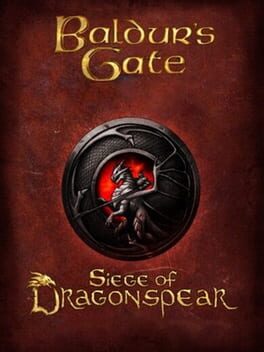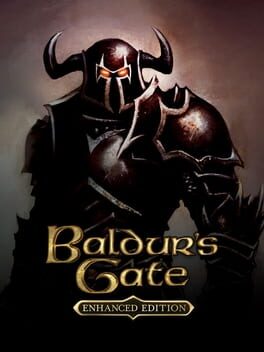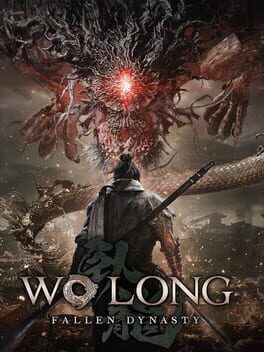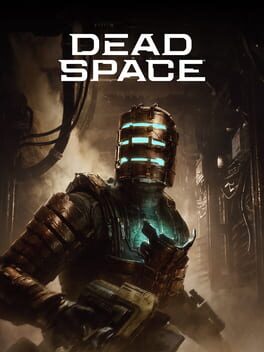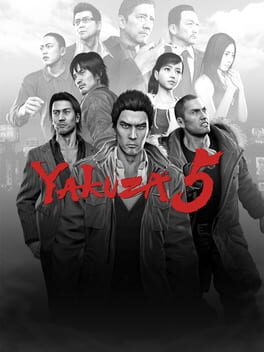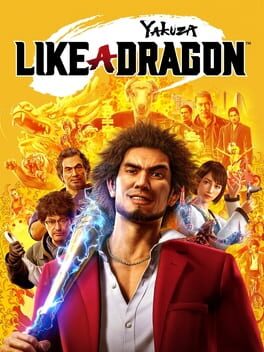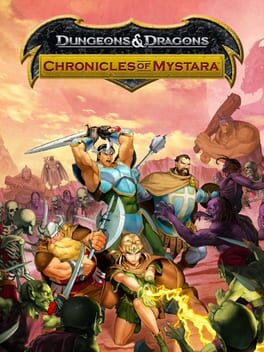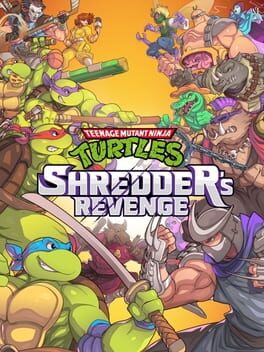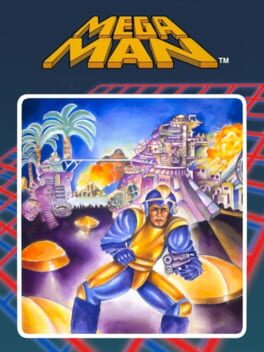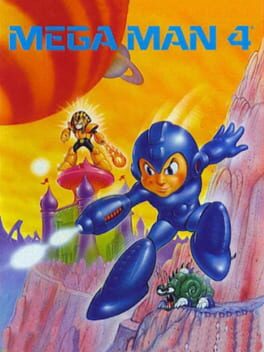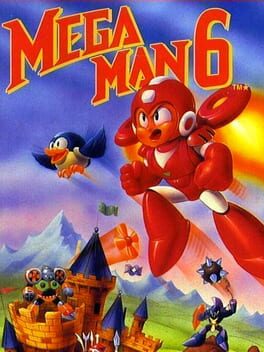FranklinWI
I replayed Baldur's Gate 1 recently on Switch, and continued on in Siege of Dragonspear, which I had already previously replayed.
Like the first BG on Switch, SoD on Switch is pretty crash-prone, especially when saving the game (which, when it happens, also deletes the save you were overwriting). With the first BG I enjoyed the game enough that I toughed it out. Unfortunately, with Siege there are other worse bugs. I made it as far as the Repository of Undeath when, about 3/4 through the dungeon, loading my save erased my dungeon progress. Like, my party was in front of the four seasonal pillars, but my map was unexplored, all the enemies had respawned, the Essences of Clarity were back on their shelves, etc. I toughed it out and started redoing the dungeon from the inside out.
Eventually I realized that my Bag of Holding, which had held my Troll Ioun Stone among other things, was empty. And that was true on every save file I had that wasn't 3+ hours old (the Switch port only has 5 save slots total, and the game's aforementioned tendency to crash means it's not realistic to keep a robust set of backups). At that point, I just gave up.
Speaking on Siege's quality from memory, I did like my initial playthrough, especially on the strength of the Icewind Dale-ish dungeon crawl escapades (I had been looking forward to the Repository of Undeath on my replay, right up until it bugged out on me and wasted three hours of my time), even though the writing is conspicuously worse than the original entries. I'd still recommend it on PC, but severely regret putting time into the Switch version and emphatically do not recommend it.
Like the first BG on Switch, SoD on Switch is pretty crash-prone, especially when saving the game (which, when it happens, also deletes the save you were overwriting). With the first BG I enjoyed the game enough that I toughed it out. Unfortunately, with Siege there are other worse bugs. I made it as far as the Repository of Undeath when, about 3/4 through the dungeon, loading my save erased my dungeon progress. Like, my party was in front of the four seasonal pillars, but my map was unexplored, all the enemies had respawned, the Essences of Clarity were back on their shelves, etc. I toughed it out and started redoing the dungeon from the inside out.
Eventually I realized that my Bag of Holding, which had held my Troll Ioun Stone among other things, was empty. And that was true on every save file I had that wasn't 3+ hours old (the Switch port only has 5 save slots total, and the game's aforementioned tendency to crash means it's not realistic to keep a robust set of backups). At that point, I just gave up.
Speaking on Siege's quality from memory, I did like my initial playthrough, especially on the strength of the Icewind Dale-ish dungeon crawl escapades (I had been looking forward to the Repository of Undeath on my replay, right up until it bugged out on me and wasted three hours of my time), even though the writing is conspicuously worse than the original entries. I'd still recommend it on PC, but severely regret putting time into the Switch version and emphatically do not recommend it.
I've played this on PC twice but because I prefer gamepad to keyboard for most games, decided to try the Switch port. The control scheme is actually pretty well done, with selecting abilities being predictably a little clunky but really not that bad. It's preferable to any of the Steam input mappings I've tried, with the ability to move the party via analog stick being the key feature.
There are two Switch-specific caveats I need to call out though (aside from not having access to mods or console commands, obviously):
One, the port is somewhat unstable. I had crashes every day or two, and if the game crashes mid-save that save slot is erased. I got in the habit of switching save files with every save, as a result, so it ended up only a minor inconvenience, but this is still obviously really bad.
Two, while I can't verify whether this bug is still in effect because I found out about it before I triggered it, but in the deepest level of the optional super-dungeon, Durlag's Tower, an NPC offers to teleport you back to the surface (so that you can rest and resupply before attempting the dungeon's final boss). In the PC version, you can get back to the 4th basement floor by retracing your steps. However (apparently) in the console versions there's a bug that prevents you from reaching the 4th basement floor a second time, meaning that both the dungeon boss and related quest rewards and objectives are also unreachable. The workaround is just to make sure you can complete the deepest dungeon level on your first visit.
I'm not prepared to really talk about BG1/BGEE at length yet because I'm working my way through a replay of the whole Bhaalspawn saga, but this was my first "evil" playthrough and I really enjoyed the arcane dominance of Edwin + Baeloth, and I really love the wide open world design of the first BG. I remember it being my favorite of the saga (even though I prefer Icewind Dale if I'm being honest). Guess I'll see if that remains true.
There are two Switch-specific caveats I need to call out though (aside from not having access to mods or console commands, obviously):
One, the port is somewhat unstable. I had crashes every day or two, and if the game crashes mid-save that save slot is erased. I got in the habit of switching save files with every save, as a result, so it ended up only a minor inconvenience, but this is still obviously really bad.
Two, while I can't verify whether this bug is still in effect because I found out about it before I triggered it, but in the deepest level of the optional super-dungeon, Durlag's Tower, an NPC offers to teleport you back to the surface (so that you can rest and resupply before attempting the dungeon's final boss). In the PC version, you can get back to the 4th basement floor by retracing your steps. However (apparently) in the console versions there's a bug that prevents you from reaching the 4th basement floor a second time, meaning that both the dungeon boss and related quest rewards and objectives are also unreachable. The workaround is just to make sure you can complete the deepest dungeon level on your first visit.
I'm not prepared to really talk about BG1/BGEE at length yet because I'm working my way through a replay of the whole Bhaalspawn saga, but this was my first "evil" playthrough and I really enjoyed the arcane dominance of Edwin + Baeloth, and I really love the wide open world design of the first BG. I remember it being my favorite of the saga (even though I prefer Icewind Dale if I'm being honest). Guess I'll see if that remains true.
I truly liked the first Nioh but found the loot system so exhausting to deal with that I bailed on the game halfway through and never wanted to go back. The specter of the loot system also kept me away from both Nioh 2 and Stranger of Paradise. I finally gave Team Ninja another chance with Wo Long, though, for two reasons:
1. I am an absolute sucker for Romance of the Three Kingdoms. Played Dynasty Warriors 3 back in the day, and got so into it that not only did I pick up 4 and 5 but went through a phase where I read the entire 2000 page 13th century Chinese novel it was adapted from, and couldn't stop clicking through every damn article on kongming.net. I lost interest circa DW6 because of the grossly reduced character roster (and I recall specifically being pissed about the omission of Pang De), and when I tried the series again with DW8 I found that it had gotten a lot goofier and duller. Turnoffs included: characters without much novel basis or martial relevance, goofy-ass weapons like a giant paintbrush or a giant pool cue, braindead enemy AI, bloodless music, and premium costume packs for an ever-increasing roster of anime high schooler waifus. Look, I'm not going to claim DW4 was a masterpiece but it was solidly good and it honestly held up when I revisited it in 2021. The series has only disappointed since leaving the PS2 era, and I've had a longstanding unsated hunger for a good ROTK action game.
2. These two sentences from a preview interview with the producer: "But when compared to Nioh, you won’t have to constantly upgrade your weapon or armor, and it’s not like each enemy will drop an item. It’s not the main focus of Wo Long’s game design, as we wanted the player to be able to focus on the action more easily."
Despite the pared back loot system, this is still wholeheartedly a By Gamers, For Gamers title. You have a skill check tutorial boss that is singlehandedly harder than most AAA games in their entirety, combat that can kill you almost instantly if you whiff one input, Pink Tail-ass drop rates on the best gear, and a whole lot of progression and equipment systems for a game that allegedly wants you to focus on the action and enter flow states.
It’s really good, though. If you can tough it out through the starter boss, the game’s deflection and morale mechanics actually provide a pretty good onramp to competent but not exceptional play. While the most seasoned action gamers (e.g. people who have beaten previous Team Ninja games) will probably find the natural “play it safe and deflect Critical Strikes” strategy to be a little simple, it does a good job of providing a base the player can build upon over time. Deflecting Critical Strikes semi-reliably is essentially the minimal competence required to clear the game, but once the player has a handle on that they can try their luck and mix in more aggressive attacks. By the time the player rolls over into the New Game+ mode called Rising Dragon, they have a genuine capacity to experiment with builds according to taste, and this will further open up the combat in interesting ways. They can use attack spells or weapon buffs to increase the complexity and reward of Fatal Strike windows, use area control spells like Imposing Slab to punish aggressive enemies, repeatedly stagger enemies with a rotating series of debuffs, elementally neutralize the enemy’s own area control options, open up new counterattack opportunities with the more mobile Martial Arts, and more. The game provides a solid foundation, and then provides a lot of options for building on that.
Even if you’re not normally a NG+ sort of player, it’s worth considering it here. The game is good enough on the initial playthrough, but it really comes alive in Rising Dragon mode. The expanded options and increased confidence you build up across the initial playthrough, combined with the smaller margin of error, make for very engaging knife’s edge boss fights, and Rising Dragon is well-tuned for a player and character fresh off that first playthrough. I honestly think that in Rising Dragon mode, the roster of boss fights in this game is among the best I’ve seen in any action game; there’s only one boss (the guy who flies and shits lightning orbs) that I thought wasn’t a complete success.
Less impressive are the game’s regular enemies. They’re fun to fight — the tiger demons are an early example that remain engaging throughout — but there’s just not a lot of variety given the game’s length. The level design, the story scenes, all the rest is basically fine but unexceptional. It’s really the bosses and other especially challenging encounters (e.g. two tigers, or a crocodile demon mixed with a second opponent) that justify the playthrough.
Because of the focus on deflection, it’s hard to avoid comparing the game to Sekiro, and I won’t hold back despite not having played Sekiro since 2019. From’s game excels in all the areas you would expect From to excel in — artistry, exploration, atmosphere, and humor (I will never forget the kamikaze kite guy) — while also being a very good action game. Wo Long is significantly less impressive in all of those categories, but excels where you’d expect Team Ninja to excel — melee combat, awesome animations, a demanding but perfect level of challenge, and frequent flow states. Sekiro is also pretty good on these metrics (despite not having any player animation half as cool as Wo Long’s nameless warrior stabbing a guy in the chest and then spin kicking off the victim to pull out his sword) but after Rising Dragon mode, I do think Wo Long’s combat is better. Taken as a total package it’s maybe a wash for me, though I certainly recommend both. Despite the upfront high difficulty of Wo Long’s door boss, the various progression systems probably make it more accessible than Sekiro in the long run. Nothing in Wo Long took me as much practice as Sword Saint.
[Some story spoilers are in the next paragraph. I've kept it deliberately vague but fair warning!]
As for the Three Kingdoms story, I’d say I found those elements acceptable but a little disappointing, but plenty of Wo Long’s ROTK flourishes were fine by me. The elixir/demonic qi stuff felt like a suitable metaphor for the “chaos” that Dynasty Warriors characters wouldn’t stop talking about. Chaos or corrupted qi, it’s abstract either way so we may as well go for qi and get some cool boss designs out of it. The expanded role of the novel’s mystic characters makes sense, more or less. The payoff with Hong Jing’s character felt like a good creative riff on something that was completely fabricated in the novel anyhow (although I didn’t love you-know-who’s face turn). No, my big complaints are much dorkier. The Xiahous have stupid looking armor. Team Ninja included Cheng Pu and Han Dang (!?) but couldn’t find room for Taishi Ci or Dian Wei or Zhang He or Zhou Yu. The Yuan Shu material is just completely absent too. Now, it wasn’t until I finished the game that I found out there’s a DLC season pass on the way, and after I saw the three DLC episode names I realized there’s a good chance that some of this stuff may have been deliberately held back. I don’t think the dumb Xiahou armor is ever getting fixed, but I still have hope we’ll get at least Taishi Ci in the second DLC episode.
Oh, the loot system that almost had me swear off Team Ninja games forever? It’s not too bad here. Unless you want to make a high end postgame build that no challenge in the game remotely requires, you can just pick your favorite ROTK character, wear their armor, keep it upgraded, and get on with your day. There’s still more loot than I’d like and it’s more random than I’d like, but the companion oath system fixed the Team Ninja formula for me.
1. I am an absolute sucker for Romance of the Three Kingdoms. Played Dynasty Warriors 3 back in the day, and got so into it that not only did I pick up 4 and 5 but went through a phase where I read the entire 2000 page 13th century Chinese novel it was adapted from, and couldn't stop clicking through every damn article on kongming.net. I lost interest circa DW6 because of the grossly reduced character roster (and I recall specifically being pissed about the omission of Pang De), and when I tried the series again with DW8 I found that it had gotten a lot goofier and duller. Turnoffs included: characters without much novel basis or martial relevance, goofy-ass weapons like a giant paintbrush or a giant pool cue, braindead enemy AI, bloodless music, and premium costume packs for an ever-increasing roster of anime high schooler waifus. Look, I'm not going to claim DW4 was a masterpiece but it was solidly good and it honestly held up when I revisited it in 2021. The series has only disappointed since leaving the PS2 era, and I've had a longstanding unsated hunger for a good ROTK action game.
2. These two sentences from a preview interview with the producer: "But when compared to Nioh, you won’t have to constantly upgrade your weapon or armor, and it’s not like each enemy will drop an item. It’s not the main focus of Wo Long’s game design, as we wanted the player to be able to focus on the action more easily."
Despite the pared back loot system, this is still wholeheartedly a By Gamers, For Gamers title. You have a skill check tutorial boss that is singlehandedly harder than most AAA games in their entirety, combat that can kill you almost instantly if you whiff one input, Pink Tail-ass drop rates on the best gear, and a whole lot of progression and equipment systems for a game that allegedly wants you to focus on the action and enter flow states.
It’s really good, though. If you can tough it out through the starter boss, the game’s deflection and morale mechanics actually provide a pretty good onramp to competent but not exceptional play. While the most seasoned action gamers (e.g. people who have beaten previous Team Ninja games) will probably find the natural “play it safe and deflect Critical Strikes” strategy to be a little simple, it does a good job of providing a base the player can build upon over time. Deflecting Critical Strikes semi-reliably is essentially the minimal competence required to clear the game, but once the player has a handle on that they can try their luck and mix in more aggressive attacks. By the time the player rolls over into the New Game+ mode called Rising Dragon, they have a genuine capacity to experiment with builds according to taste, and this will further open up the combat in interesting ways. They can use attack spells or weapon buffs to increase the complexity and reward of Fatal Strike windows, use area control spells like Imposing Slab to punish aggressive enemies, repeatedly stagger enemies with a rotating series of debuffs, elementally neutralize the enemy’s own area control options, open up new counterattack opportunities with the more mobile Martial Arts, and more. The game provides a solid foundation, and then provides a lot of options for building on that.
Even if you’re not normally a NG+ sort of player, it’s worth considering it here. The game is good enough on the initial playthrough, but it really comes alive in Rising Dragon mode. The expanded options and increased confidence you build up across the initial playthrough, combined with the smaller margin of error, make for very engaging knife’s edge boss fights, and Rising Dragon is well-tuned for a player and character fresh off that first playthrough. I honestly think that in Rising Dragon mode, the roster of boss fights in this game is among the best I’ve seen in any action game; there’s only one boss (the guy who flies and shits lightning orbs) that I thought wasn’t a complete success.
Less impressive are the game’s regular enemies. They’re fun to fight — the tiger demons are an early example that remain engaging throughout — but there’s just not a lot of variety given the game’s length. The level design, the story scenes, all the rest is basically fine but unexceptional. It’s really the bosses and other especially challenging encounters (e.g. two tigers, or a crocodile demon mixed with a second opponent) that justify the playthrough.
Because of the focus on deflection, it’s hard to avoid comparing the game to Sekiro, and I won’t hold back despite not having played Sekiro since 2019. From’s game excels in all the areas you would expect From to excel in — artistry, exploration, atmosphere, and humor (I will never forget the kamikaze kite guy) — while also being a very good action game. Wo Long is significantly less impressive in all of those categories, but excels where you’d expect Team Ninja to excel — melee combat, awesome animations, a demanding but perfect level of challenge, and frequent flow states. Sekiro is also pretty good on these metrics (despite not having any player animation half as cool as Wo Long’s nameless warrior stabbing a guy in the chest and then spin kicking off the victim to pull out his sword) but after Rising Dragon mode, I do think Wo Long’s combat is better. Taken as a total package it’s maybe a wash for me, though I certainly recommend both. Despite the upfront high difficulty of Wo Long’s door boss, the various progression systems probably make it more accessible than Sekiro in the long run. Nothing in Wo Long took me as much practice as Sword Saint.
[Some story spoilers are in the next paragraph. I've kept it deliberately vague but fair warning!]
As for the Three Kingdoms story, I’d say I found those elements acceptable but a little disappointing, but plenty of Wo Long’s ROTK flourishes were fine by me. The elixir/demonic qi stuff felt like a suitable metaphor for the “chaos” that Dynasty Warriors characters wouldn’t stop talking about. Chaos or corrupted qi, it’s abstract either way so we may as well go for qi and get some cool boss designs out of it. The expanded role of the novel’s mystic characters makes sense, more or less. The payoff with Hong Jing’s character felt like a good creative riff on something that was completely fabricated in the novel anyhow (although I didn’t love you-know-who’s face turn). No, my big complaints are much dorkier. The Xiahous have stupid looking armor. Team Ninja included Cheng Pu and Han Dang (!?) but couldn’t find room for Taishi Ci or Dian Wei or Zhang He or Zhou Yu. The Yuan Shu material is just completely absent too. Now, it wasn’t until I finished the game that I found out there’s a DLC season pass on the way, and after I saw the three DLC episode names I realized there’s a good chance that some of this stuff may have been deliberately held back. I don’t think the dumb Xiahou armor is ever getting fixed, but I still have hope we’ll get at least Taishi Ci in the second DLC episode.
Oh, the loot system that almost had me swear off Team Ninja games forever? It’s not too bad here. Unless you want to make a high end postgame build that no challenge in the game remotely requires, you can just pick your favorite ROTK character, wear their armor, keep it upgraded, and get on with your day. There’s still more loot than I’d like and it’s more random than I’d like, but the companion oath system fixed the Team Ninja formula for me.
2023
I almost skipped this. I love it.
I thought the original was already great and didn't need a remake. The remake improves it, and fixes the parts (like the ADS stuff) that made me hesitant to replay the original.
I almost never do New Game Plus. I'm close to finishing my second playthrough and considering a third.
I thought the original was already great and didn't need a remake. The remake improves it, and fixes the parts (like the ADS stuff) that made me hesitant to replay the original.
I almost never do New Game Plus. I'm close to finishing my second playthrough and considering a third.
2012
When people criticize Yakuza 4 for it's story, it's for ridiculous plot elements, but despite the silly plot elements the story knows exactly which characters and motivations resonate, and the plot never loses sight of them. 5's plot isn't as ridiculous at the level of drive by mockery, but the pacing is glacial, the conflict isn't clear for almost the entire game, and the story feels disjointed when it moves from character to character, which is absolutely not the case in the other multi-protagonist entries (0 and 4). I preferred the rubber bullets.
Saejima becomes a more interesting character in this one -- at peace with his past, he becomes sort of a cranky sage -- even if the story involving him is not as compelling. The other returning characters turn in more likable and interesting performances in earlier games (Kiryu in literally every other title, Haruka in 3, Akiyama in 4).
That leaves newcomer Shinada to justify the game and coax me into a potential eventual replay. I really liked Shinada and his story. Weirdly, his relationship with his moneylender was the most affecting in the game, and his incorruptible love for baseball (e.g. refusing to use a bat as a weapon) made for a perfect contrast with both his own scuzzy persona and the corruption that swirls around Nagoya.
In its favor, 5 is where the series really steps up the in-depth minigames, and it's the first one with side activities that don't feel anemic compared to 0's real estate, club management, and Pocket Fighter games. Haruka's rhythm game really needed a higher level of difficulty and a larger song list. As it is it overstayed its welcome, but I enjoyed the main minigames from the other chapters.
Still definitely recommended; even the weaker Kiryu games are good games.
Saejima becomes a more interesting character in this one -- at peace with his past, he becomes sort of a cranky sage -- even if the story involving him is not as compelling. The other returning characters turn in more likable and interesting performances in earlier games (Kiryu in literally every other title, Haruka in 3, Akiyama in 4).
That leaves newcomer Shinada to justify the game and coax me into a potential eventual replay. I really liked Shinada and his story. Weirdly, his relationship with his moneylender was the most affecting in the game, and his incorruptible love for baseball (e.g. refusing to use a bat as a weapon) made for a perfect contrast with both his own scuzzy persona and the corruption that swirls around Nagoya.
In its favor, 5 is where the series really steps up the in-depth minigames, and it's the first one with side activities that don't feel anemic compared to 0's real estate, club management, and Pocket Fighter games. Haruka's rhythm game really needed a higher level of difficulty and a larger song list. As it is it overstayed its welcome, but I enjoyed the main minigames from the other chapters.
Still definitely recommended; even the weaker Kiryu games are good games.
Like the team's previous effort (Touhou Luna Nights), this is ostensibly a Metroidvania but the exploration is neither particularly satisfying nor the main draw. Instead, these titles justify themselves by giving the player character a slightly awkward, slightly brain-bendy moveset and tasking them with fluently applying it to some pretty good boss fights. I don't really mean "awkward" as an insult. Honestly, at this point in my life, control schemes or character powers that don't conform to what my brain or hands already expect are a plus. Deedlit's ability to shift between fire and wind aspects, and the asymmetry of those aspects, and the frequency of these aspect shifts, give boss fights a frantic feel that I was completely on board for.
The boss fights were the big hook for me, but I also want to specifically compliment the SOTN-inspired sprites.
I doubt I'll replay, but just as Touhou was good enough that I gave Deedlit a chance, Deedlit was good enough that I'll probably try Drainus too.
The boss fights were the big hook for me, but I also want to specifically compliment the SOTN-inspired sprites.
I doubt I'll replay, but just as Touhou was good enough that I gave Deedlit a chance, Deedlit was good enough that I'll probably try Drainus too.
The Yakuza series was already brimming with so many things that separate the best JRPGs from the rest, like deeply satisfying character arcs, climactic boss battles, surprisingly engrossing minigames, killer music, daddy issues, and charismatic performances from even bit players. I wasn't happy about Yakuza changing its stripes because I liked the brawler combat in addition to all of the above, but I'm a long time fan of JRPGs and in particular consider Dragon Quest III to be pretty much unimpeachable, so I still had high hopes.
I couldn't finish it.
At no point in the game did I gel with the combat system. Again, I like turn based games like Dragon Quest, which LAD obviously cribs from, but the encounter designs and the abilities of the player characters are not fun. The comedy propped up the experience for me for as long as the game's difficulty curve was fairly smooth/mellow, because I could avoid engaging deeply with systems I didn't enjoy. On the side, I was enjoying the minigames and the story quite a bit, and that was more than enough to propel me through.
Then I got to what is a pretty infamous difficulty spike in chapter 12, and that foregrounded everything I disliked about the game, all at once. The game clearly expects you to do the battle arena content to power up, and probably the earlier optional sewer dungeon too, and I had absolutely no interest in optional combat content.
People sometimes claim that classic JRPGs were grindy, but they mostly weren't outside of some early experiments like the original two Dragon Quests, and some particularly masochistic subgenres. By the time the genre's mainstream got to Dragon Quest III, there was maybe one hour of grinding you'd have to do to get the anti-breath spell before fighting Baramos, and that was it. So long as you weren't running away from encounters, you would be strong enough. And as a rule, the more story-focused a JRPG was, the less likely it was the player would need to grind at all, although the option was there.
Anyhow, yes, the chapter 12 dungeon/boss and the preceding battle arena grind completely soured me on this game. I got past the boss, perhaps motivated by spite, and then walked away from the game.
I'm still not opposed to the idea of a turn-based Yakuza game, but the fundamentals are going to have to be much better than what's on offer in LAD.
I couldn't finish it.
At no point in the game did I gel with the combat system. Again, I like turn based games like Dragon Quest, which LAD obviously cribs from, but the encounter designs and the abilities of the player characters are not fun. The comedy propped up the experience for me for as long as the game's difficulty curve was fairly smooth/mellow, because I could avoid engaging deeply with systems I didn't enjoy. On the side, I was enjoying the minigames and the story quite a bit, and that was more than enough to propel me through.
Then I got to what is a pretty infamous difficulty spike in chapter 12, and that foregrounded everything I disliked about the game, all at once. The game clearly expects you to do the battle arena content to power up, and probably the earlier optional sewer dungeon too, and I had absolutely no interest in optional combat content.
People sometimes claim that classic JRPGs were grindy, but they mostly weren't outside of some early experiments like the original two Dragon Quests, and some particularly masochistic subgenres. By the time the genre's mainstream got to Dragon Quest III, there was maybe one hour of grinding you'd have to do to get the anti-breath spell before fighting Baramos, and that was it. So long as you weren't running away from encounters, you would be strong enough. And as a rule, the more story-focused a JRPG was, the less likely it was the player would need to grind at all, although the option was there.
Anyhow, yes, the chapter 12 dungeon/boss and the preceding battle arena grind completely soured me on this game. I got past the boss, perhaps motivated by spite, and then walked away from the game.
I'm still not opposed to the idea of a turn-based Yakuza game, but the fundamentals are going to have to be much better than what's on offer in LAD.
I'm quite fond of both classic D&D and Capcom's King of Dragons arcade brawler, so both of the games in this collection seemed like a good bet. Shadow is better than Tower, but I don't really like either and after a few hours with these games I want nothing more from them and am going back to King of Dragons.
I played through story mode on Gnarly, mostly with April, and noodled around a bit with other characters. Also spent time playing co-op with two friends.
In co-op, it's a fine time, but everyone knows that's faint praise; most co-op games are at least somewhat fun with friends.
Solo, it's decent but never really great. In the game's favor we have a really wholehearted celebration of the 1987 cartoon, audiovisual TLC to match, and a pretty expansive movelist that makes jumping in and out of melees frantic and satisfying. Unfortunately, the game's got a couple of major problems.
One, the super attack is overpowered, and in the absence of any clear incentive not to, the player will want to charge up to full between fights, slowing down the pace. The devs built a pretty decent movelist and then incentivized the player to just spam supers instead.
Two, while most of the regular enemies are fun to fight, the boss design is pretty bad. Many bosses use a very basic pattern where you have to wait for an opening, then rush in to do one full combo at most, then back off and wait again. None of the bosses are great, but the better ones are just those with more openings or shorter periods between openings. You can't juggle bosses, or parry them, or do much other than wait for permission to attack, far as I can tell. The worst bosses are those like Rat King, Slash, and the last boss (game's new enough that I won't spoil it, although you can probably guess) that play red light/red light/red light/green light with attack opportunities. Go watch gameplay of Streets of Rage 4, God Hand, Ninja Warriors, etc for comparison. I just don't think the fundamentals of this game's boss design are good enough. I realize this is a relative weakness of a number of brawlers of the late 80s and early 90s, but the devs didn't have to reproduce every bad idea that was en vogue in 1992.
I've played an enjoyed a number of Tribute's games (Curses N Chaos in particular is generally underrated), and they always impress with their visuals, and usually the music's pretty good too, including here.
In co-op, it's a fine time, but everyone knows that's faint praise; most co-op games are at least somewhat fun with friends.
Solo, it's decent but never really great. In the game's favor we have a really wholehearted celebration of the 1987 cartoon, audiovisual TLC to match, and a pretty expansive movelist that makes jumping in and out of melees frantic and satisfying. Unfortunately, the game's got a couple of major problems.
One, the super attack is overpowered, and in the absence of any clear incentive not to, the player will want to charge up to full between fights, slowing down the pace. The devs built a pretty decent movelist and then incentivized the player to just spam supers instead.
Two, while most of the regular enemies are fun to fight, the boss design is pretty bad. Many bosses use a very basic pattern where you have to wait for an opening, then rush in to do one full combo at most, then back off and wait again. None of the bosses are great, but the better ones are just those with more openings or shorter periods between openings. You can't juggle bosses, or parry them, or do much other than wait for permission to attack, far as I can tell. The worst bosses are those like Rat King, Slash, and the last boss (game's new enough that I won't spoil it, although you can probably guess) that play red light/red light/red light/green light with attack opportunities. Go watch gameplay of Streets of Rage 4, God Hand, Ninja Warriors, etc for comparison. I just don't think the fundamentals of this game's boss design are good enough. I realize this is a relative weakness of a number of brawlers of the late 80s and early 90s, but the devs didn't have to reproduce every bad idea that was en vogue in 1992.
I've played an enjoyed a number of Tribute's games (Curses N Chaos in particular is generally underrated), and they always impress with their visuals, and usually the music's pretty good too, including here.
1986
Like its Konami siblings Contra and Gradius, Castlevania has a design that only really reveals its strengths once you decide to knuckle down and get good at it, and of those three it's Castlevania that most benefits from learning to approach it on its own terms: deciding which subweapon to use in each stage, or knowing which candles aren't safe to hit, or remembering where you need to duck or jump to reveal moneybags to earn extra lives...
The game has an arcade sensibility, not in the sense of being a quarter muncher (it's a pretty mellow 1CC all things considered, even in the second loop), but in the sense of demanding practice and mastery. It's only truly great if you meet it on its own terms, but if you do it's probably still the best title in the series. It's leaner and better paced than Dracula's Curse or Rondo of Blood.
The game has an arcade sensibility, not in the sense of being a quarter muncher (it's a pretty mellow 1CC all things considered, even in the second loop), but in the sense of demanding practice and mastery. It's only truly great if you meet it on its own terms, but if you do it's probably still the best title in the series. It's leaner and better paced than Dracula's Curse or Rondo of Blood.
1987
Definitely less accessible than the rest, with meaner instant death pitfalls and a lack of E Tanks. I do not recommend this as a series starting point. If you find that you love the formula, I'd say this should be one of the last 8 bit MM games you play, sort of a last stop before switching to romhacks, if you really want more.
The charm is there, and it's impressive for its vintage, but understand that it was MM2 that really launched the franchise and became the template for good reason.
The charm is there, and it's impressive for its vintage, but understand that it was MM2 that really launched the franchise and became the template for good reason.
1991
This is missing a certain spark that the first three possessed, and it's easier to be unimpressed. Despite that, there's really nothing wrong with this title aside from following a formula, and there's a case to be made that it's the best of the set as a result. I think MM2 is still my favorite set of weapons despite their imbalance, but it's a matter of taste. If you like the feeling of shredding waves of enemies with the Metal Blade in MM2 or the Spread Gun in Contra, MM4's weapons won't provide that feeling. On the other hand, if you find the Metal Blade too dominant, MM4's weapons do a good job of feeling useful without feeling too OP. The Wire and the Balloon are weirdly redundant but still quite welcome, and they manage to fill some specialized niches better than the Rush tools.
If you're open to playing romhacks, there's a really maximalist one for this game, Rockman 4 Minus Infinity, which is really impressive just as a hacking feat but which is also a wild, empowering, creative blast to play. Highly recommended after playing the also recommended base version.
If you're open to playing romhacks, there's a really maximalist one for this game, Rockman 4 Minus Infinity, which is really impressive just as a hacking feat but which is also a wild, empowering, creative blast to play. Highly recommended after playing the also recommended base version.
1993
In 1993, the formula was getting a little tired (like Assassin's Creed games circa 2015), but the game really holds up in retrospect despite the hokey "robot masters of the world" concept and the worst of the six NES soundtracks. It just gets the basics right -- the stages are fun to navigate, the bosses are fun to fight, and the weapons are a pretty solid set too, with Flame Blast in particular being surprisingly powerful.
On top of that, MM6 has a pretty welcome innovation in replacing Rush with a couple of altered states for Mega Man, the Power Adapter and Jet Adapter. The former is a little awkward, but the latter is a joy to use; you lose charge shots and your slide, but gain a jetpack. It's a blast, and the element that most often draws me back to this entry.
Unfortunately, the two Rush Adapters are also tied to one of the worst parts of the game -- more time spent in menus. Switching between Jet, Power, and normal modes breaks the flow, which is unfortunate because the stages are often built around it. Later MM games (including fan games) tend to have Mega Man X-style weapon switching as a default feature, and while the NES controller didn't have enough buttons to properly accommodate, it would have been a huge QOL improvement for e.g. the Select button to cycle through these three forms.
The one other thing holding MM6 back is that, because the adapters are used to access certain hidden paths, there's a more prescriptive stage order (if you don't want to replay stages, at least). Older MM games had valuable consumables (E Tanks and extra lives) that you could only get with certain gear, but nothing that was quasi-mandatory like BEAT letters. You really HAVE to do Plant Man and Flame Man before the four BEAT stages. It's disappointing considering that past entries might have easier or harder routes through the opening stages (getting the Magnet Beam before tackling Ice Man, or Flash Stopper before Quick Man...), but nothing like this.
Not my favorite, but it's a really solid game and often overlooked.
On top of that, MM6 has a pretty welcome innovation in replacing Rush with a couple of altered states for Mega Man, the Power Adapter and Jet Adapter. The former is a little awkward, but the latter is a joy to use; you lose charge shots and your slide, but gain a jetpack. It's a blast, and the element that most often draws me back to this entry.
Unfortunately, the two Rush Adapters are also tied to one of the worst parts of the game -- more time spent in menus. Switching between Jet, Power, and normal modes breaks the flow, which is unfortunate because the stages are often built around it. Later MM games (including fan games) tend to have Mega Man X-style weapon switching as a default feature, and while the NES controller didn't have enough buttons to properly accommodate, it would have been a huge QOL improvement for e.g. the Select button to cycle through these three forms.
The one other thing holding MM6 back is that, because the adapters are used to access certain hidden paths, there's a more prescriptive stage order (if you don't want to replay stages, at least). Older MM games had valuable consumables (E Tanks and extra lives) that you could only get with certain gear, but nothing that was quasi-mandatory like BEAT letters. You really HAVE to do Plant Man and Flame Man before the four BEAT stages. It's disappointing considering that past entries might have easier or harder routes through the opening stages (getting the Magnet Beam before tackling Ice Man, or Flash Stopper before Quick Man...), but nothing like this.
Not my favorite, but it's a really solid game and often overlooked.
1992
Like MM3, MM5 has an unfortunately weak set of special weapons, even with the Super Arrow as a bonus 9th weapon. Gravity Hold is situationally pretty fun. Beyond that, most of the others feel weirdly interchangeable with the charged Mega Buster.
Nevertheless, this is one of my most played classic MM games. It deprioritizes the special weapons in favor of the Mega Buster, which is a really weird choice for a Mega Man game, but not a fatal one because the Buster feels better here than in any other game. They've widened the blast and removed the kickback, making it very good for cruising through a stage and obliterating popcorn enemies, often several at once if you line things up correctly. All eight robot masters are IMO most fun to fight with the Buster; they're fairly basic (though Charge Man and Crystal Man can get messy) but executing the dance is fun. Critically, you lose your Mega Buster charge if you get hit, so if you're playing the first eight stages Buster-only you can't just tank hits. For me, that keeps this game engaging, at least in its first half. In the back half, the lack of good weapons make MM5 less engaging than several other titles in the series, but if I'm in the mood to just spend 20-30 minutes blasting through some MM stages without intent to clear the whole game, I think MM5's first half might be the most reliable little blast of action in the series.
Nevertheless, this is one of my most played classic MM games. It deprioritizes the special weapons in favor of the Mega Buster, which is a really weird choice for a Mega Man game, but not a fatal one because the Buster feels better here than in any other game. They've widened the blast and removed the kickback, making it very good for cruising through a stage and obliterating popcorn enemies, often several at once if you line things up correctly. All eight robot masters are IMO most fun to fight with the Buster; they're fairly basic (though Charge Man and Crystal Man can get messy) but executing the dance is fun. Critically, you lose your Mega Buster charge if you get hit, so if you're playing the first eight stages Buster-only you can't just tank hits. For me, that keeps this game engaging, at least in its first half. In the back half, the lack of good weapons make MM5 less engaging than several other titles in the series, but if I'm in the mood to just spend 20-30 minutes blasting through some MM stages without intent to clear the whole game, I think MM5's first half might be the most reliable little blast of action in the series.
